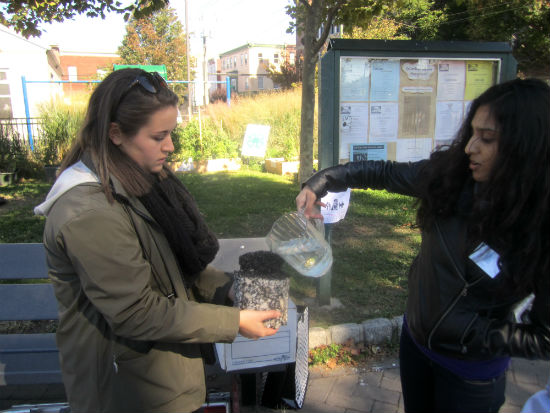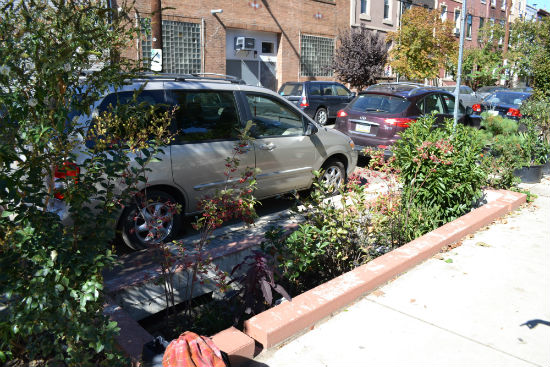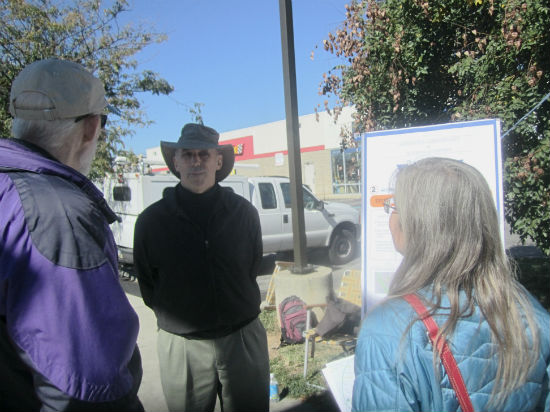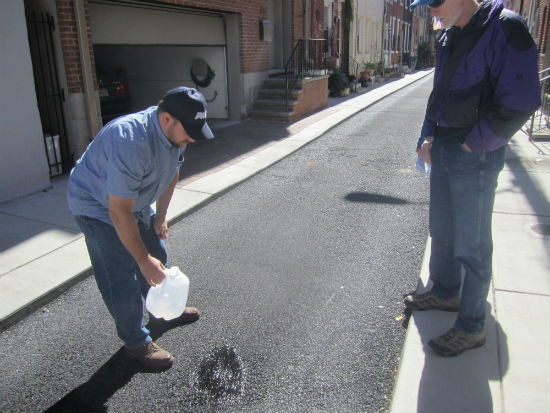Searching South Philly for sustainable streets

Do you know how often a pedestrian is hit by a car in Philadelphia? Or how many bathtubs worth of water are treated by the stormwater planters on 13th Street?
As part of DesignPhiladelphia, the Mayor’s Office of Transportation and Utilities (MOTU) and the Philadelphia Water Department held a sustainable streets scavenger hunt that sent participants looking for these and other answers in South Philadelphia. A main goal of Saturday’s event was to introduce Philadelphians to what a “complete street” is and how green infrastructure can be incorporated into street planning to help manage storm water run off.
Both the Philadelphia Water Department (PWD) and MOTU have grand visions for the future of Philadelphia’s streets. MOTU has drafted its Complete Streets Handbook, which is in public comment period until November and which will help guide roadway development that suits all users. The water department has started on its 25-year, $2 billion Green City, Clean Waters plan, which will implement green infrastructure to manage the city’s storm water. Both departments want to create ideal streetscapes that serve all users – motorists, pedestrians, bicyclists – and serve multiple functions – in this case, both transportation and storm water management.
“One of our most important [focus areas] and a place where we can have the most impact is our streets in Philadelphia,” said Jessica Brooks, PWD manager of green infrastructure planning.

During the scavenger hunt, city staff were stationed at four area intersections to explain to event participants and passersby how storm water management is or could be in use and how each location might benefit from a complete street makeover.
The sustainable streets scavenger hunt brought participants to
- 13th and Wharton streets, where storm water planters border Columbus Square
- 10th Street and Washington Ave, where a combination of complete streets and PWD green infrastructure could create a slower, greener, more pedestrian and bicycle friendly roadway
- Percy Street, where the water department has installed porous paving that allows water to flow through the roadway surface into a stone bed beneath, and
- 9th and Ellsworth streets, where a nearby construction project is an example of how future, larger developments will help manage storm water runoff.

The scavenger hunt ended at Cantina Los Caballitos where participants who could answer the questions above [1. Every 4 hours a pedestrian is hit by a car in Philadelphia and 2. The stormwater planters on 13th Street treat 7,100 gallons or 142 bathtubs per storm event] and several others had a chance to win a bicycle rack or a rain barrel.
For more information on the city’s complete streets efforts, visit http://philadelphiastreets.com/handbook.aspx, and for more on the Philadelphia Water Department’s green infrastructure, visit their “Big Green Map.”

WHYY is your source for fact-based, in-depth journalism and information. As a nonprofit organization, we rely on financial support from readers like you. Please give today.




